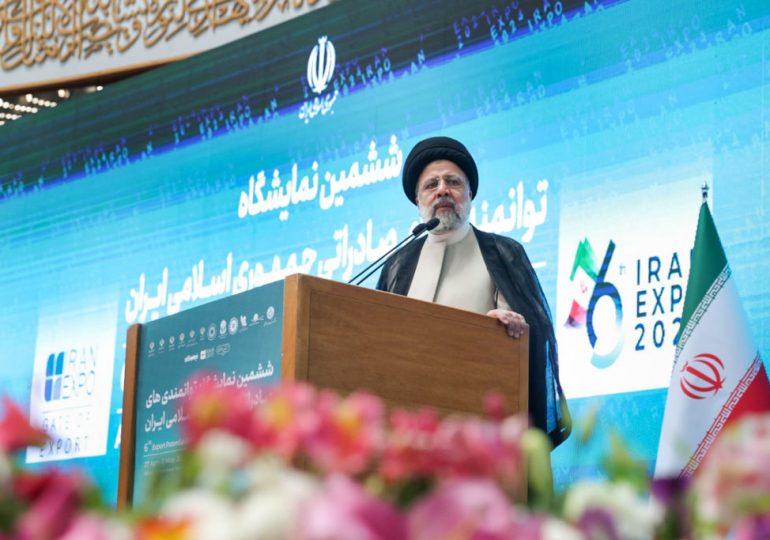Ebrahim Raisi, whose helicopter crashed in the northwest of Iran on Sunday, was both the President of Iran and a candidate jockeying to succeed the elderly actual ruler of the country, Supreme Leader Ali Khamenei. Both political positions carried an elevated risk level roughly comparable with that of traveling by air inside Iran—where aviation safety, compromised by decades of sanctions and uneven maintenance, has claimed the lives of almost as many senior Iranian officials as its shadow war with Israel, which also loomed over Raisi’s reported demise.
[time-brightcove not-tgx=”true”]
The cause of the crash—which also killed Iranian Foreign Minister Hossein Amirabdollahian, the governor of Iran’s East Azerbaijan province, and others—is pending investigation. But any official finding will be open to interpretation—like the fireworks that erupted in the streets over Tehran on Sunday night: were they celebrating the eve of the holiday marking the birth of Reza, known as the 8th Imam? Or the death of Raisi, the notoriously hardline President?
Suspicions abound. The crash came two months after Iran launched a massive missile and drone attack on Israel, retaliating for an Israeli airstrike that killed two senior Iranian generals in Syria on April 1. Israel’s initial response to the unprecedented direct attack on its territory was so muted as to qualify as symbolic: targeting an anti-aircraft battery guarding a nuclear facility.
For those disposed to believe the crash was Tel Aviv dropping the other shoe, the site of the incident encourages speculation. Raisi’s helicopter went down in mountainous forest near the border with Azerbaijan, which is the least friendly of Iran’s neighbors—in part because it maintains relations with Israel, and has a history of cooperating with Mossad.
But the weather was also a suspect. Iranian state reported efforts to locate the crash site were impeded by fog, winds and heavy rain, and released footage of rescue crews rushing through an enveloping mist.
Finally, there’s the internal politics of the Islamic Republic—notoriously brutal in the best of times, but even more so given persistent rumors that Khamenei, who has ruled for 35 years, is ailing.
“Raisi’s death would create a succession crisis in Iran,” Karim Sadjapour, a senior fellow at the Carnegie Endowment for International Peace, told TIME on Sunday, as the anchors on state television donned black. “He and Mojtaba Khamenei—son of the 85-year-old Supreme Leader—are the only talked-about candidates for succession. In Iran’s conspiratorial political culture, few will believe Raisi’s death was accidental.”
Raisi, 63, thrived in that conspiratorial culture. The name of his political faction, the Combatant Clergy Association, hints at his place in the authoritarian theocratic system that in 1979 replaced the monarchy that had ruled Iran for much of the 20th Century. Raisi made his career as an enforcer, serving as prosecutor in a variety of provinces, and demonstrating his commitment as a hardliner. In the late 1980s, he served on a “death committee” that human rights groups say ordered the execution of thousands of political prisoners without trial.
The executions upset the succession plan of Grand Ayatollah Ruhollah Khomeini, the Shi’ite cleric who had led the 1979 Revolution, after his own outraged protégé, declared: “I said I would follow you anywhere, but I will not follow you to hell.” The job went instead to the similarly named Khamenei, with an expeditious promotion to Ayatollah. In the decades that followed, Raisi rose as well, eventually heading the judiciary, which reports directly to the Leader.
Raisi had no apparent political following, however, beyond the regime loyalists who make up some 20 percent of Iran’s 88 million people. His 2021 election as President, amid record low turnout and allegations of rigging, was seen by observers as a signal that “the system,” as Iranians call the ruling apparatus, no longer regarded elective offices as a necessary pressure valve for the majority of Iranian society that resents the combined rule of hardline clerics and the Islamic Revolutionary Guard Corps.
That calculation survived the strongest internal challenge to the regime in decades, when women led nationwide protests that went on for months following the September 2022 death of Mahsa Amini, who had been detained by “morality police.” More than 500 protesters were killed by the regime’s security forces, and more than 20,000 arrested.
A year later, Raisi was in New York to visit the United Nations. Protected by diplomatic immunity from arrest on charges over the 1980s executions, he used a meeting with U.S. reporters to boast that the “Woman, Life, Freedom” uprising, which he blamed on the U.S. and Europe, had failed. “Last year, during the course of the instability brought about by the rioters, in only 48 days, over 36,000 lies were produced and propagated and disseminated in the media,” Raisi said. “Did it work? The proof is in the pudding, as they say.”
Leave a comment








